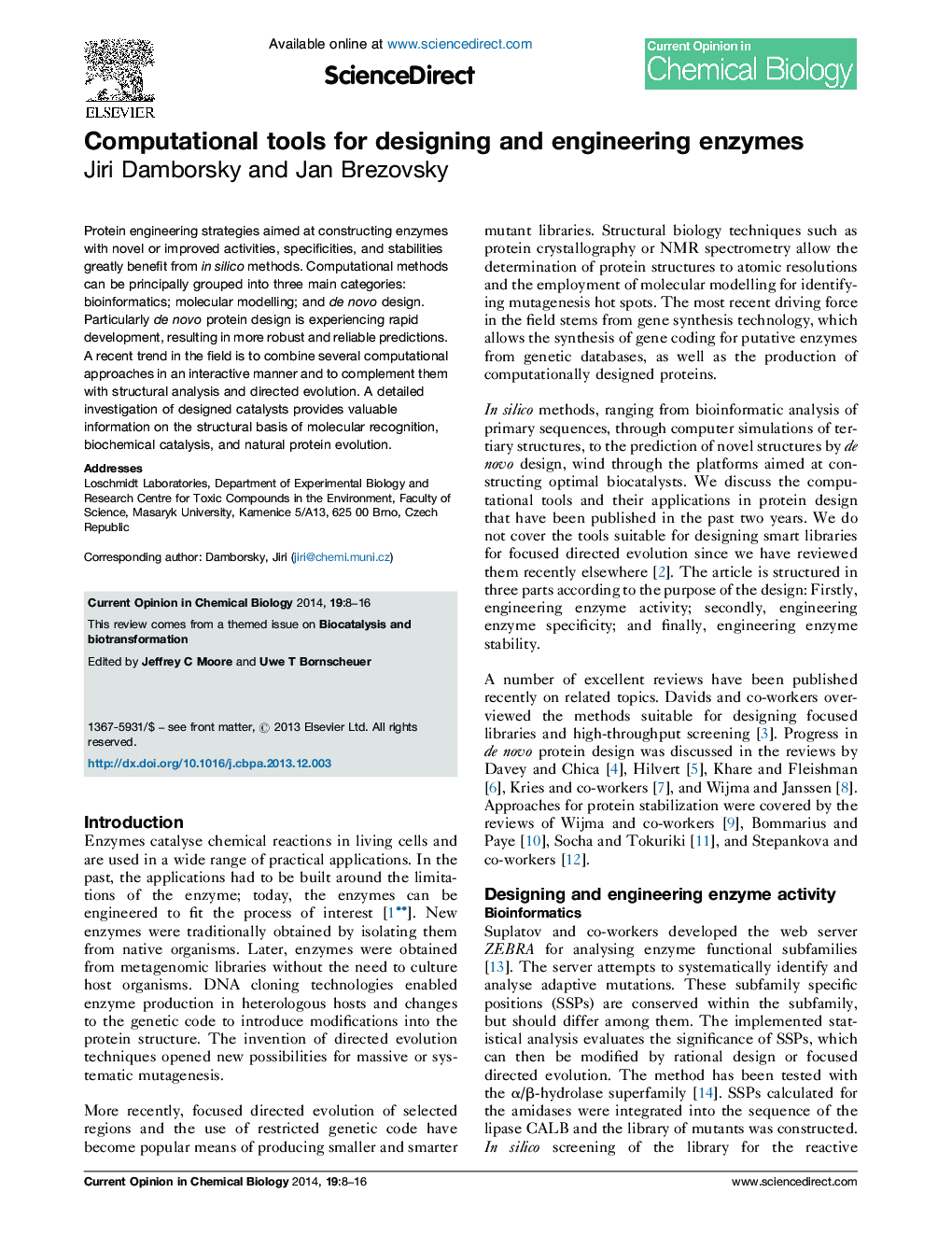| Article ID | Journal | Published Year | Pages | File Type |
|---|---|---|---|---|
| 7694859 | Current Opinion in Chemical Biology | 2014 | 9 Pages |
Abstract
Protein engineering strategies aimed at constructing enzymes with novel or improved activities, specificities, and stabilities greatly benefit from in silico methods. Computational methods can be principally grouped into three main categories: bioinformatics; molecular modelling; and de novo design. Particularly de novo protein design is experiencing rapid development, resulting in more robust and reliable predictions. A recent trend in the field is to combine several computational approaches in an interactive manner and to complement them with structural analysis and directed evolution. A detailed investigation of designed catalysts provides valuable information on the structural basis of molecular recognition, biochemical catalysis, and natural protein evolution.
Related Topics
Physical Sciences and Engineering
Chemistry
Chemistry (General)
Authors
Jiri Damborsky, Jan Brezovsky,
